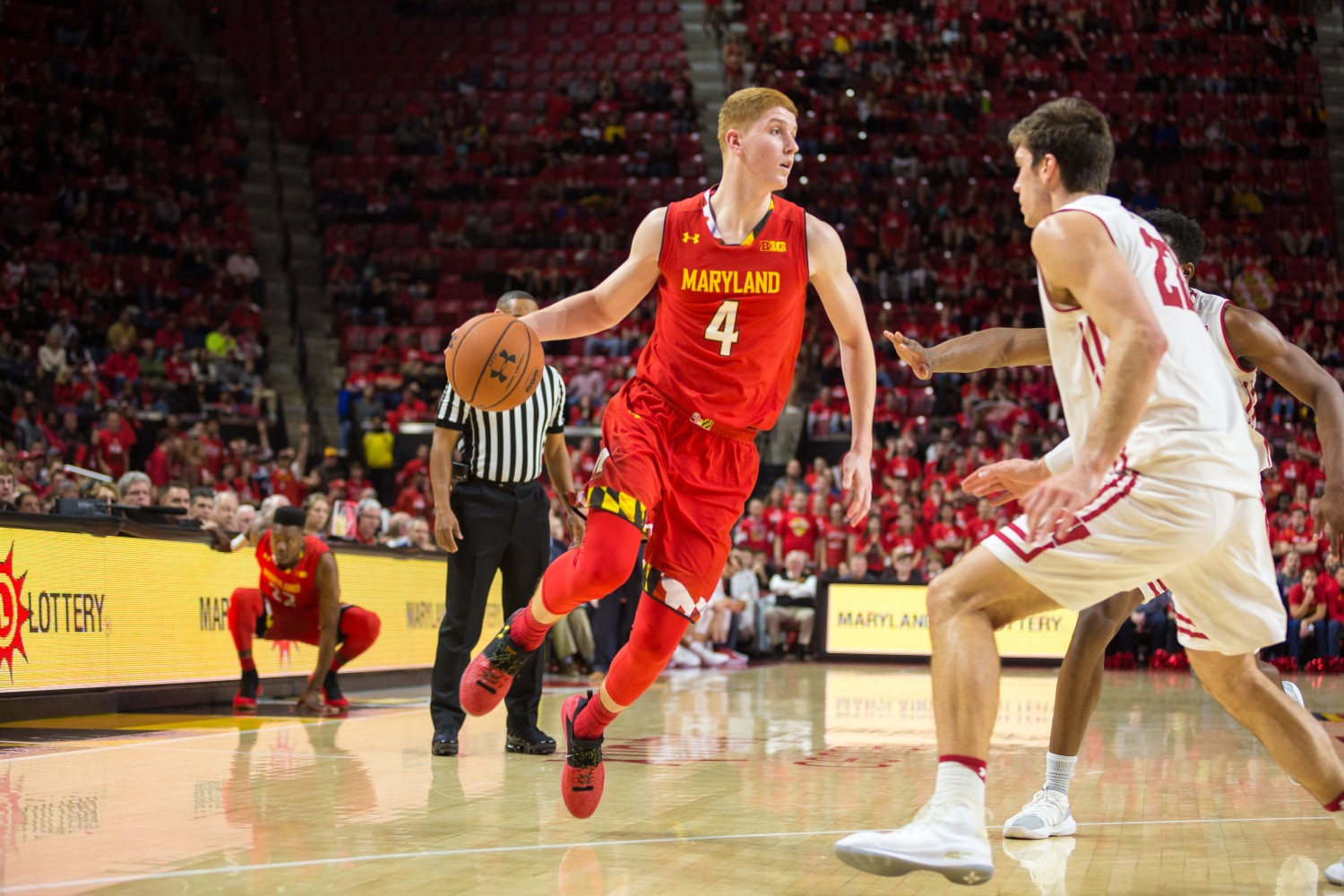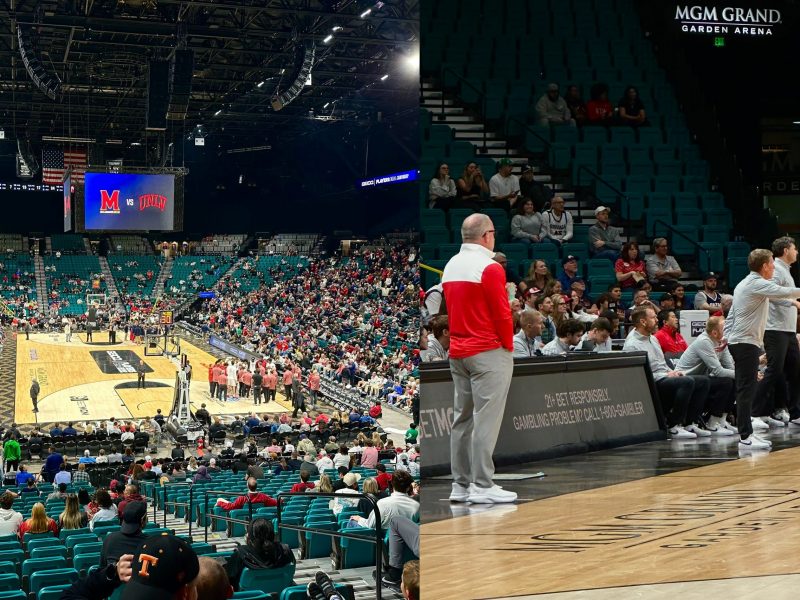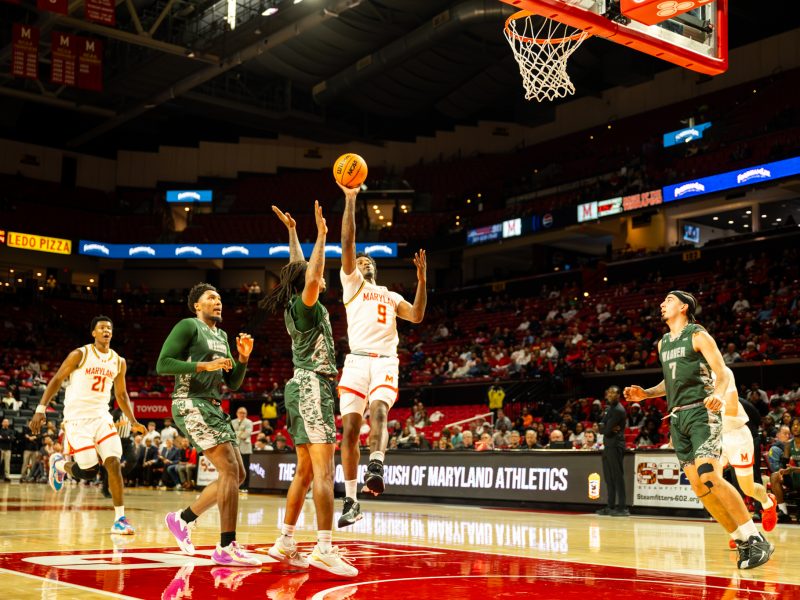WASHINGTON, D.C. — The first time Byron Mouton met Kevin Huerter — before the guard from Clifton Park, New York, had even committed to Maryland men’s basketball — Mouton saw the potential for him to play professionally.
“It was only a matter of time,” Mouton said.
So when Huerter elected May 30 to keep his name in the NBA draft and end his college career after two years, Mouton — himself a former Terps guard/forward — wasn’t surprised. Huerter’s impressive sophomore year and breakout pre-draft combine pushed him to first-round projections in mock drafts.
[Read more: Kevin Huerter stays in NBA draft, ending Maryland basketball career]
At Maryland’s first game of the Legends Coalition Basketball League, Mouton and other members of the Terps’ alumni team shared their thoughts on Huerter’s decision, reflecting on their own experiences turning pro and giving near-unanimous approval of Huerter forgoing his final two years of college eligibility.
“His skill set is off the charts,” Mouton said. “I knew once he’d go to the NBA Combine, his stock would rise, because he’s 6-foot-7, can shoot it, [is] athletic, can handle it. So, he’s definitely a lock for first-round pick. You’ve gotta go, man.”
Huerter’s 41.7 percent 3-point shooting last year ranked seventh in Maryland history and powered him to 14.8 points per game in the Terps’ disappointing 19-13 season, which ended without a postseason bid.
[Read more: After Cliff Tucker died, a Maryland basketball alumni game helped his loved ones heal]
“He can shoot a three and he’s athletic,” former Terps guard John Gilchrist said. “Just that in itself fits into an NBA scheme. Anybody would be lucky to have a guy with that high level of three-point shooting ability.”
Gilchrist sees similarities between Huerter and former Duke guard — and Maryland rival — J.J. Redick. Redick’s 40.6 three-point percentage as a Blue Devil bests Huerter’s by 1.2 percentage points, but it’s Redick’s all-around play that’s earned him an 12-year NBA career.
“I think he can do more than J.J. on the court,” Gilchrist said. “He kind of puts me in a mindset of a Jake Layman, but, in my opinion, he attacks more than Jake.”
Gilchrist understands what Huerter went through in the past few months. After Gilchrist averaged a career-best 15.4 points as a sophomore, he opted to return to College Park, but saw his draft stock slide as a junior.
Gilchrist entered the draft after that season and went undrafted.
“I saw an opportunity, I took a gamble, and I didn’t cash out,” he said. “All the chips have to fall into place and the right person has to trust you and give you the opportunity.”
Huerter watched former guard Melo Trimble stay in College Park for three seasons instead of leaving for the draft following his freshman year. But Trimble’s first campaign turned out to be his defining one, as he never regained the success and hype he earned as a rookie.
Trimble, like Gilchrist, left following his junior year and went undrafted.
“Trimble should’ve left after his first year,” Mouton said. “He actually helped turn the Maryland program back to elite status, and it was a situation where it was almost impossible to meet that again.”
In the volatile world of the NBA draft, opportunities can vanish as quickly as they appear. Trimble and Gilchrist may have stayed too long with the Terps and missed a chance at being drafted.
So, the consensus among the alumni on hand at Kelly Miller Middle School was that another year with the Terps may not develop Huerter, but instead could diminish his best chance to make an NBA roster.
“If you think that you’re good enough to go,” former Terps guard Sean Mosley said, “why wait?”



